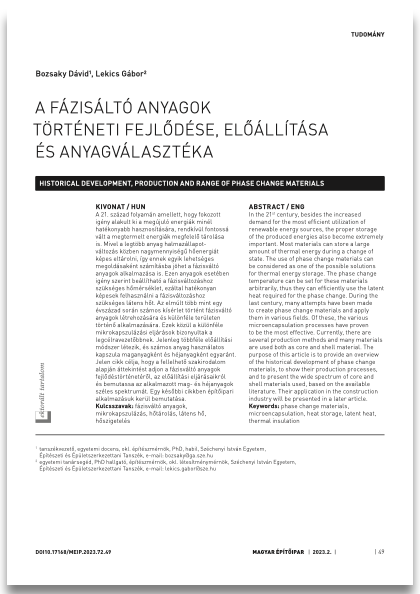HISTORICAL DEVELOPMENT, PRODUCTION AND RANGE OF PHASE CHANGE MATERIALS
DOI:
https://doi.org/10.17168/MEIP.2023.72.49Keywords:
phase change materials, microencapsulation, heat storage, latent heat, thermal insulationAbstract
In the 21st century, besides the increased demand for the most efficient utilization of renewable energy sources, the proper storage of the produced energies also become extremely important. Most materials can store a large amount of thermal energy during a change of state. The use of phase change materials can be considered as one of the possible solutions for thermal energy storage. The phase change temperature can be set for these materials arbitrarily, thus they can efficiently use the latent heat required for the phase change. During the last century, many attempts have been made to create phase change materials and apply them in various fields. Of these, the various microencapsulation processes have proven
to be the most effective. Currently, there are several production methods and many materials are used both as core and shell material. The purpose of this article is to provide an overview of the historical development of phase change materials, to show their production processes, and to present the wide spectrum of core and shell materials used, based on the available literature. Their application in the construction industry will be presented in a later article.

Downloads
Published
Issue
Section
License

This work is licensed under a Creative Commons Attribution-NonCommercial-ShareAlike 4.0 International License.

